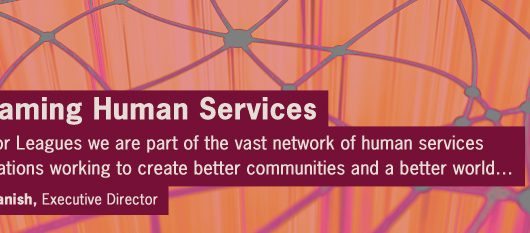In one of the poorest neighborhoods in one of the poorest cities in the U.S., the Junior League of Hartford tackled food insecurity head on through an ambitious initiative to “reinvent” the basic food pantry while also targeting the underlying issues of poverty that create the need for emergency food.
Why did you become involved in this issue of food access?
Hunger is a significant problem in the Greater Hartford area – one that affects 128,000 people in our community. Chronic hunger exacerbates many of the social problems in our area – children who are too listless to pay attention in school, teens with health or substance abuse problems or who drop out of school. Chronically hungry individuals are more prone to drug and alcohol abuse and are more likely to commit crimes in pursuit of food or the means to get food. Hartford is among the poorest cities in the nation, and for the residents of the North End community of Upper Albany, food insecurity is a particular problem.
How did you become involved with the creation of Freshplace?
We worked for seven years with two major area nonprofits, Chrysalis Center and Foodshare, and a local research university on the planning of Freshplace. The facility is located in Upper Albany, and what appealed to our membership was the innovative nature of the program. It is designed to be much more than a traditional food pantry; in addition to standard pantry staples, Freshplace provides at-risk families with fresh fruits, vegetables, meat and dairy products. The fresh products are particularly needed in this neighborhood where residents have no easy access to a supermarket. Even more critically than the food, the project provides wrap-around services, including case management and referrals for increased access to food stamps, health and crisis intervention programs, public assistance, and educational services. The point is that hunger is symptomatic of the real problem: poverty. We want to help move people out of crisis to a point of stability where they can make a “fresh start” towards self-sufficiency.
Freshplace’s doors opened in 2010 and the program has become a community resource, assisting in the revitalization of the Upper Albany neighborhood, supporting the network of existing area food pantries, and creating a center for community involvement.
Has Freshplace been successful in “reinventing” the food pantry?
Yes! A unique aspect of Freshplace is that it was the first food pantry to be rigorously evaluated by academic researchers with an eye toward replicating the program elsewhere. Dr. Katie S. Martin, assistant professor of Nutrition and Public Health at the University of Saint Joseph oversaw the study in an effort to determine why food insecurity remains a very persistent problem despite the dramatic increase in the number of food pantries nationwide. Her research included data collected on 228 “chronically food-insecure” adults in a randomized parallel group, one half of these Freshplace members. The resulting report analyzed data collected quarterly over eighteen months, and it was found that the Freshplace clients were significantly more likely to be food secure and have increased self-sufficiency than the group receiving support from the traditional food pantry. The additional assistance clients are given in the areas of employment, housing and other support services make a big difference, ultimately, in food security. We truly believe that in an atmosphere of dignity and respect, we can work together with our community partners to help reduce and eliminate the need in our midst.
While the Junior League of Hartford has rolled off its direct commitment to Freshplace, this summer the Freshplace founders and Dr. Martin developed a 100-page replication manual for use by pantries and service providers interested in shifting to a Freshplace model or adopting some of its proven best-practice procedures. The manual includes development guidelines, operating procedures, research methods, and many of the intake and evaluation forms that we use at Freshplace. It is available free of charge and agencies from across the United States have already requested copies since its publication in September 2014.

